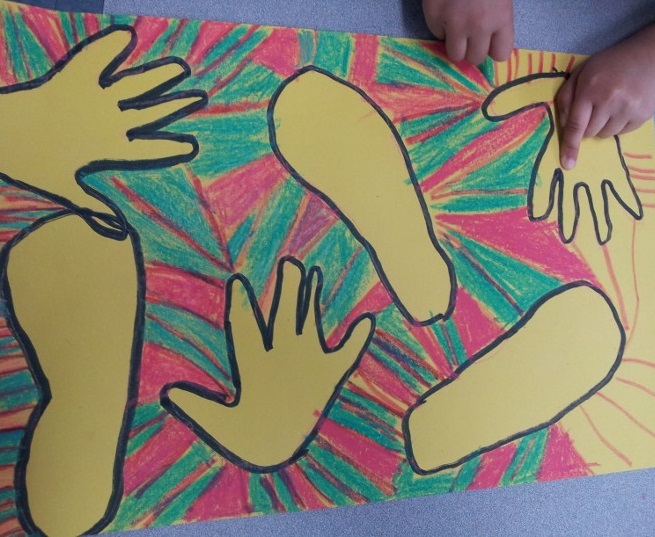Art assignments are more than mere projects, they are holistic learning opportunities in which art creation is just one aspect of the overall learning experience. These experiences can include one-on-one discussion, class discussion, reading, writing, art creation, experimentation, movement, singing, and reflection. The product of these experiences—the “art”—demonstrates a student’s understanding of concepts, vocabulary, and craftsmanship. Below are a few examples of past projects.
Georgia O’Keeffe Flower Paintings
Welcoming spring, students studied the closeup flower paintings of Georgia O’Keeffe and created one of their own. By excluding the leaves and stem of the plant, the center of each flower is boldly emphasized.
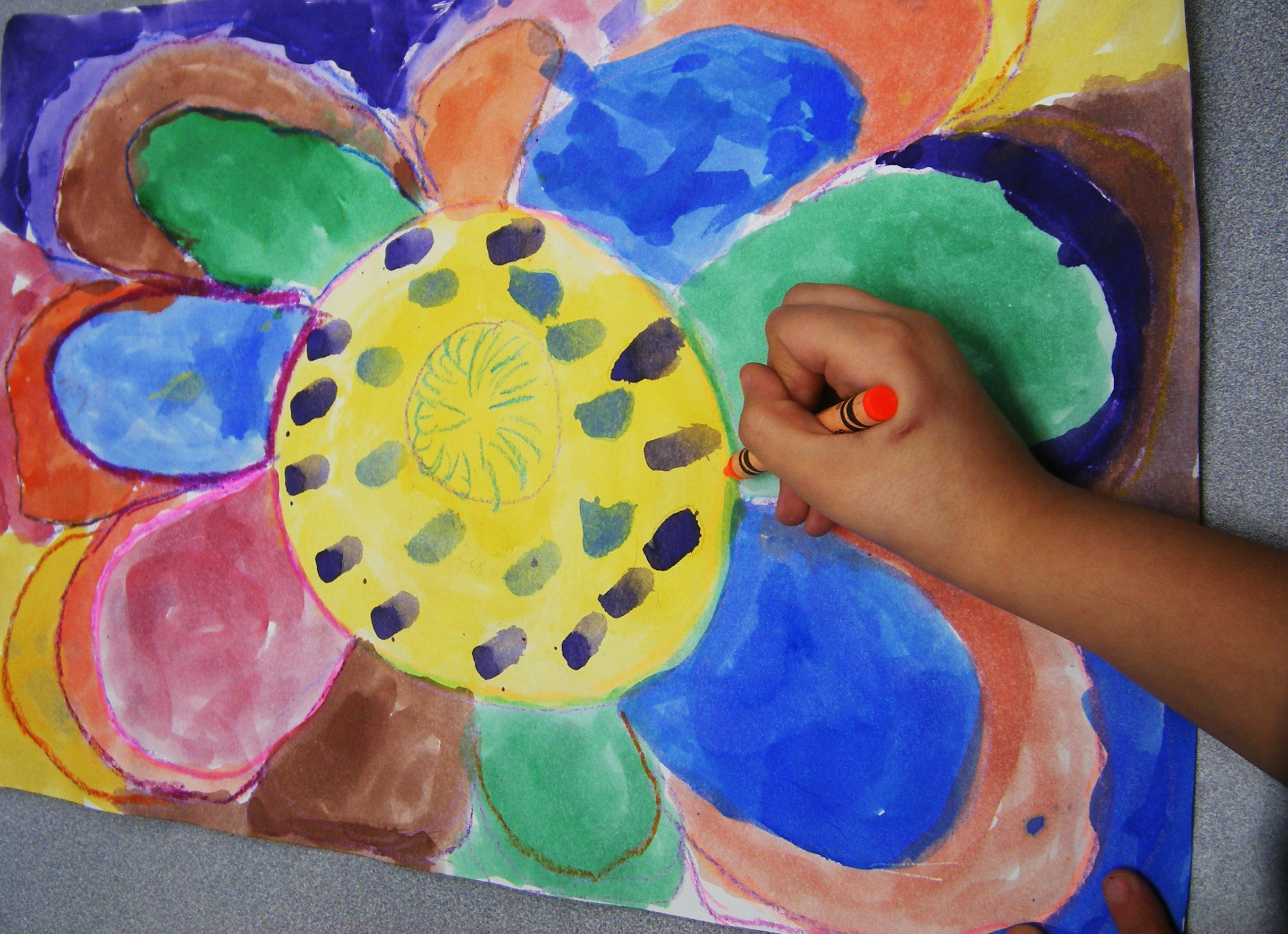

Senufo Paintings
Focusing on concepts of pattern and subject, first graders created their version of traditional artworks made by the Senufo Tribe from the Ivory Coast, West Africa. The Senufo believe these drawings have special mystical powers that protect and bring hunters good luck. Often depicting animals, these images incorporate geometric designs such as circles, stripes, and zigzags.

Painting Shapes and Colors
Students created small shape paintings as part of the process of learning about shapes, colors, and painting procedures. The importance of borders was also introduced, with each student applying two borders to his or her masterpiece.
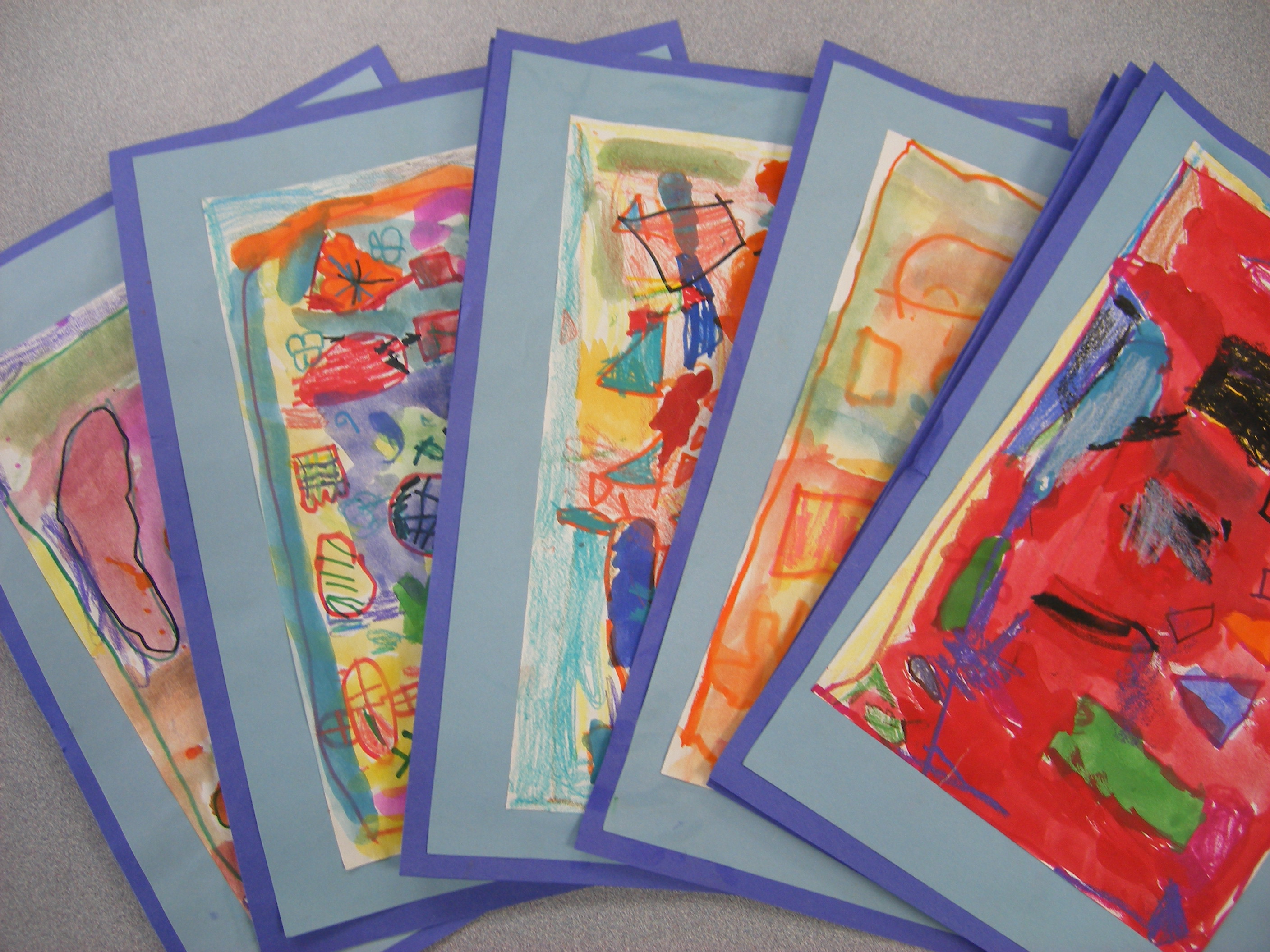
The Sun is a Star
First grade students created paper suns to bring symbolic warmth into the school midwinter. After learning that the sun is a star, students traced contour lines of their hands, cut them out, and glued them to a center circle using rotational symmetry. The suns were attached to strings and hung on display from the ceiling.

The Weather Outside
Students drew their favorite types of weather using markers and crayons. The image below shows one student’s combined love of spring flowers, cloudy days, rain, and sunshine.
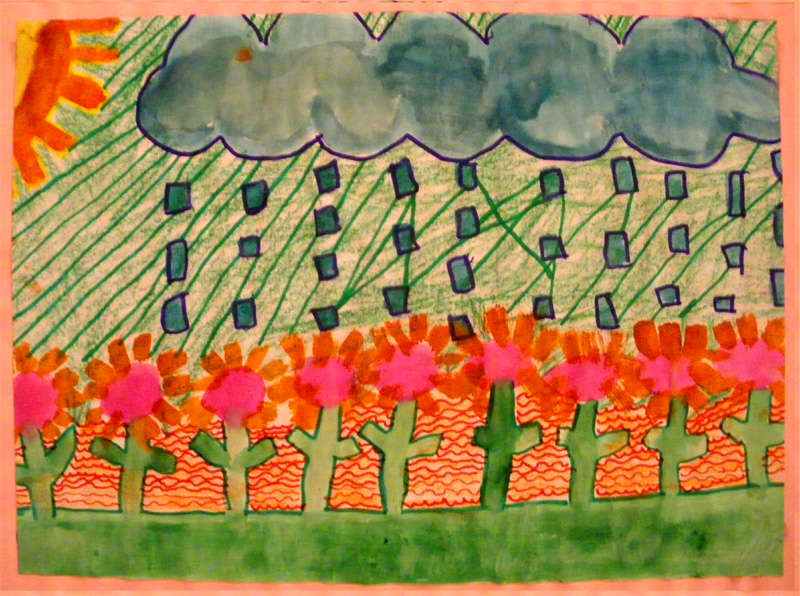
Getting Ready For School
The most meaningful art is based on real world experience. Students thought about their morning routine and drew an image of themselves engaged in something important they do to get ready for school. Eating breakfast and brushing their teeth topped the list!
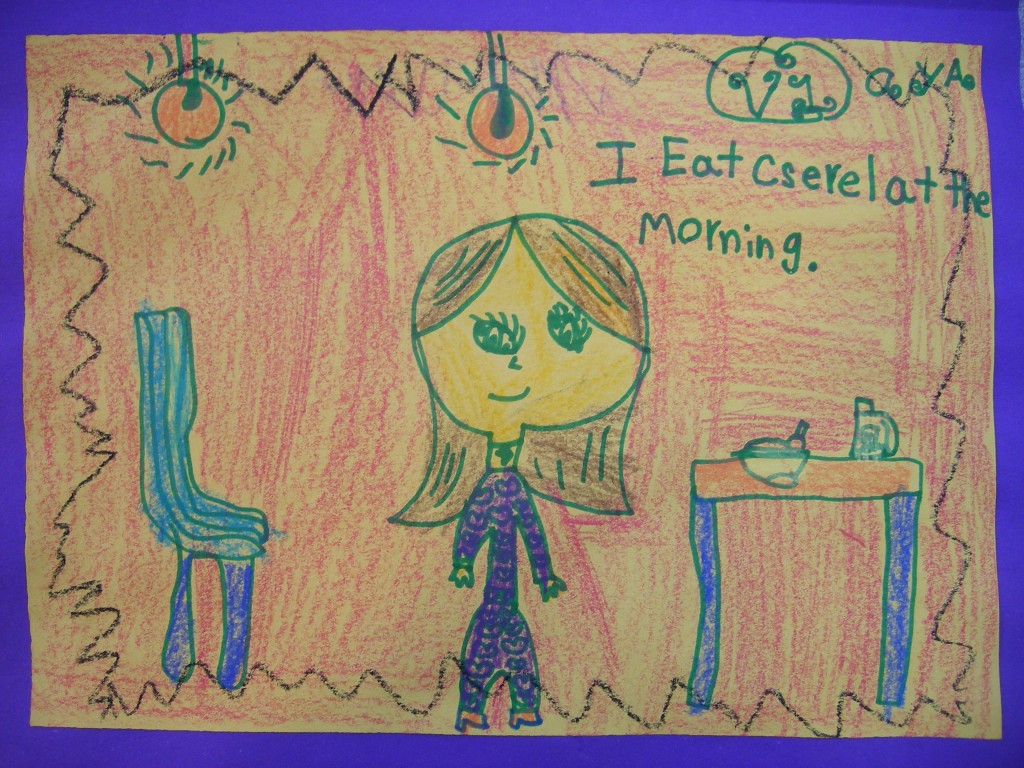
Kandinsky Circles
Students learned about the bright colors and geometric shapes used by artist Wassily Kandinsky. Subsequently, they were introduced to oil pastels and created their own versions and patterns of colorful concentric circles.
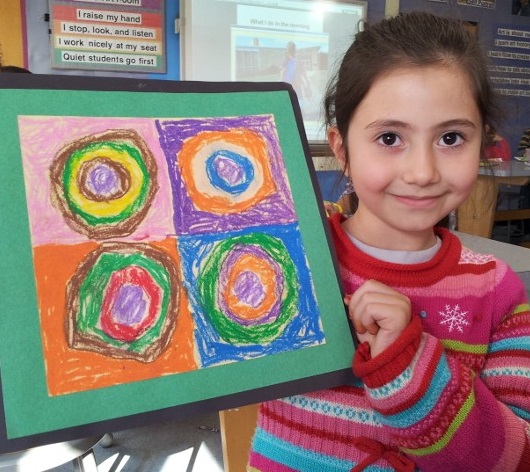
Family Portrait
Art education is most meaningful when it has a personal connection to the student-artist. Once a year, each student creates an overlapping family portrait with a variety of materials. The image below is a crayon drawing outlined with thin, permanent marker. The happy family depicted at the bottom share the same smile as a deceased grandmother, floating high above.

Self Portrait
Students drew self portraits of themselves without looking in a mirror. The drawings, often exaggerated due to inexperience and expressionism, were wonderful to look at. A patterned background enhanced each drawing further.

Intersecting Sculpture
Students created sculptures using flat pieces of card stock paper after revisiting the difference between shapes and forms. The sculptures are held together by intersecting slits cut into each shape, allowing the sculptures to be changed during creation, and enabling the students to disassemble them at school and reassemble them at home.
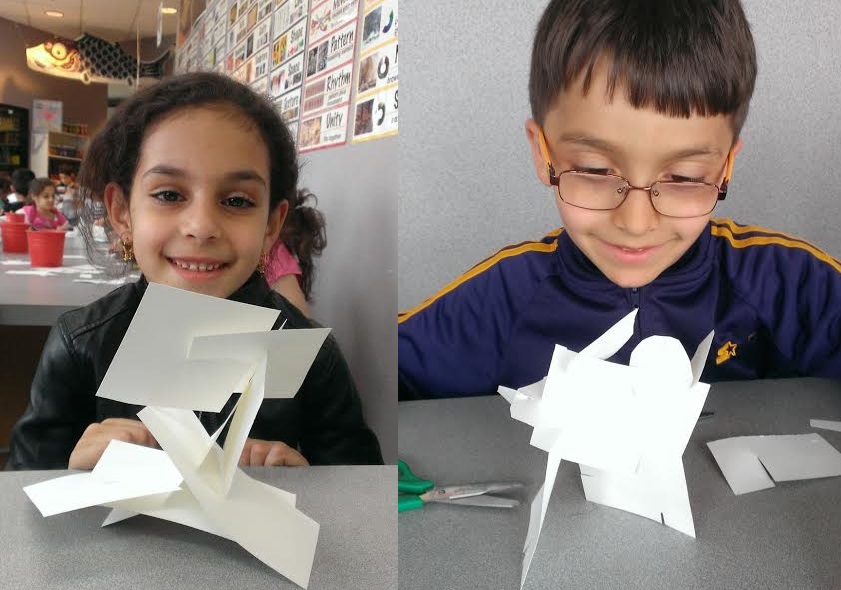
Beautiful Borders
Students learned that pictures can be enhanced by creating borders around the outside. After using a ruler to draw straight borders along the edges, each student drew his or her favorite animal, gave the animal an appropriate environment, and decorated the border.

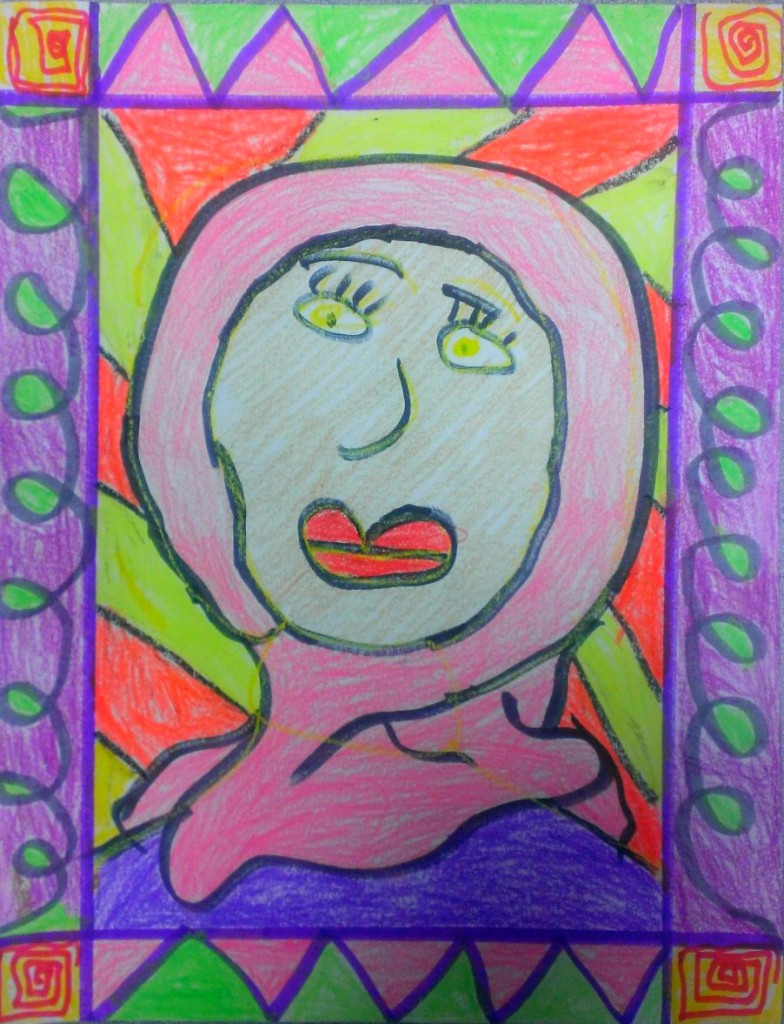
Open Hands and Feet
By creating designs around contour lines of their hands and feet, students learned that they can create images backwards, in which the background is colored and the foreground is not. The open space, or negative space, becomes highlighted due to its solid color.
